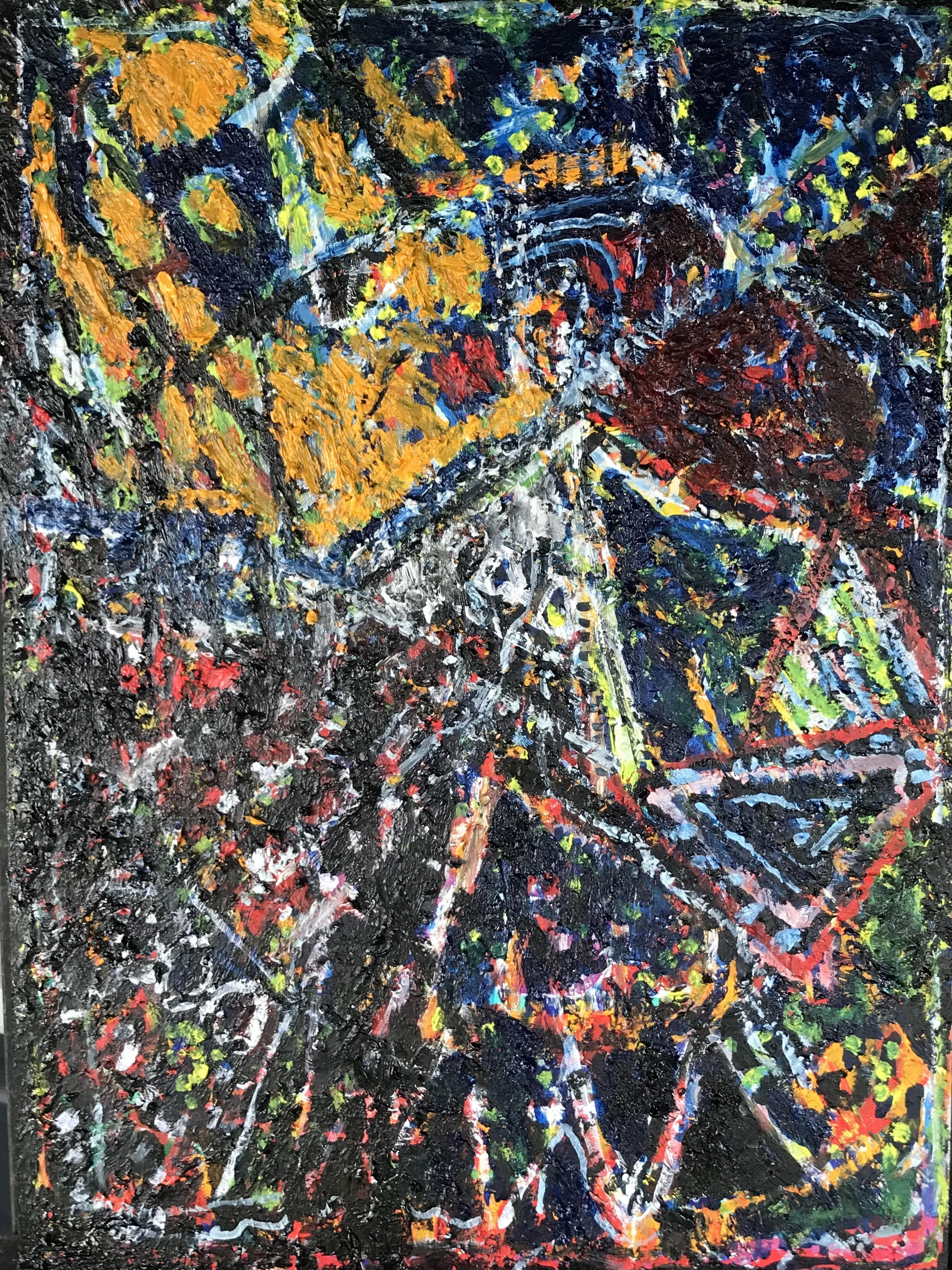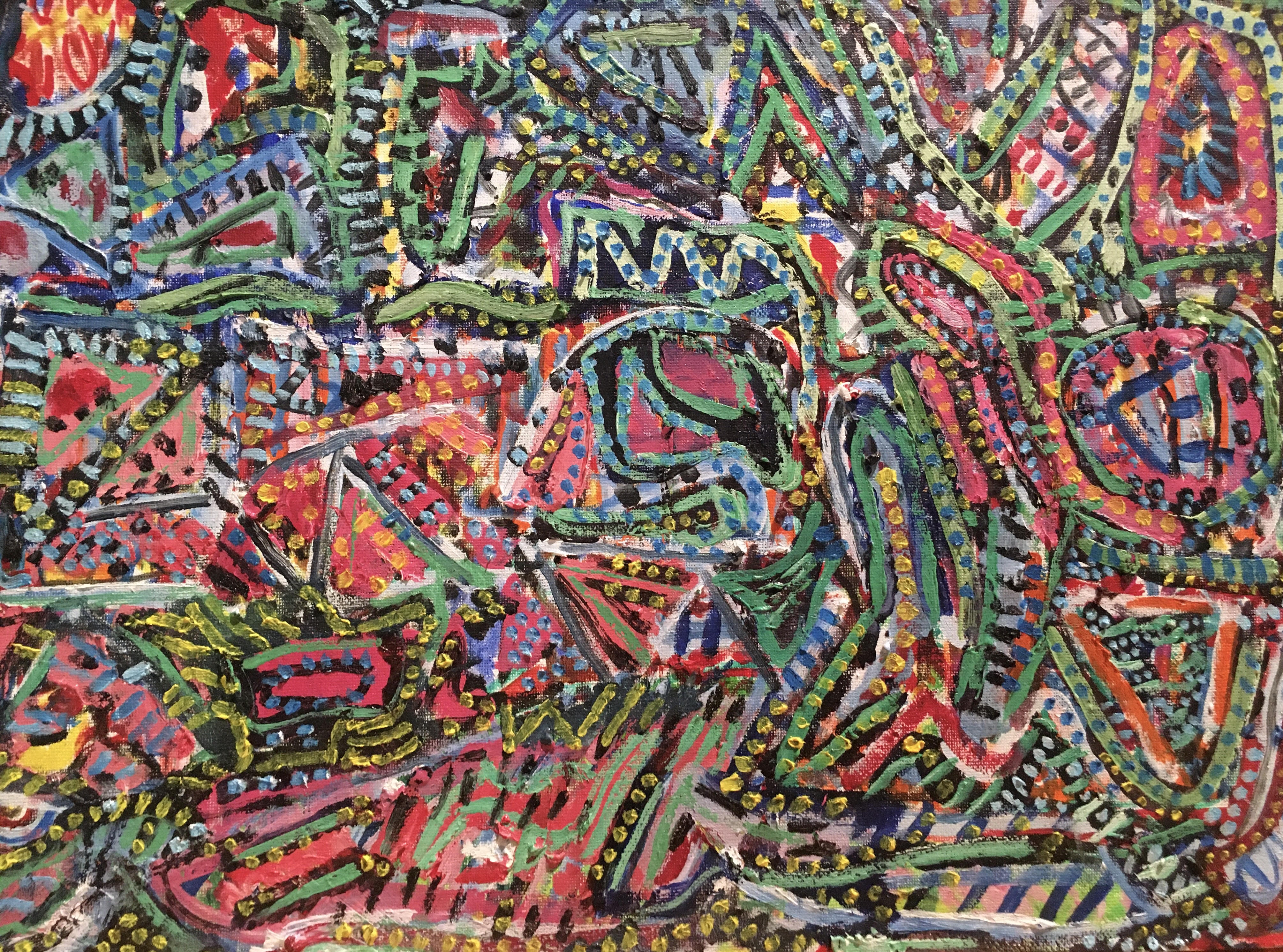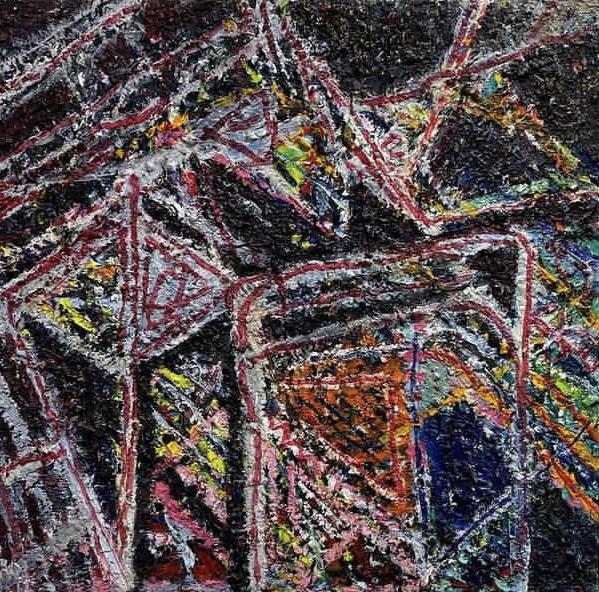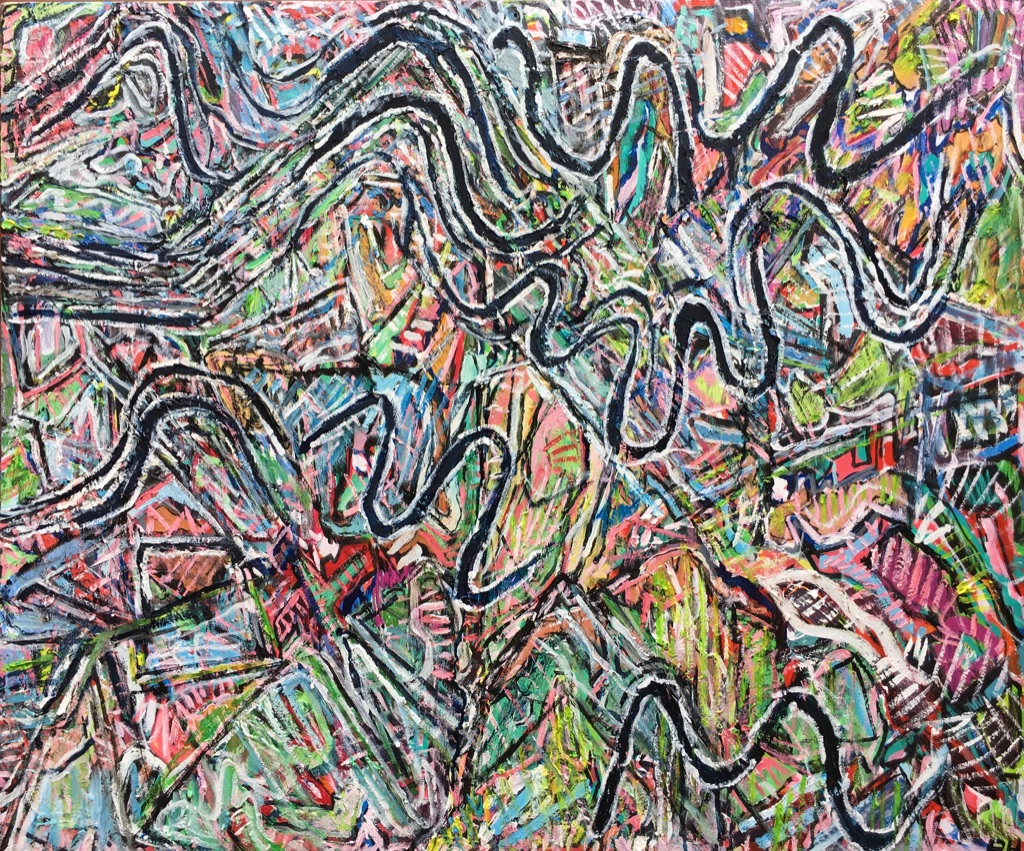Some paintings
Richard Harry

Elucidating and coming to know the meaning and purpose of my paintings presents something of a paradox. Primarily, I prefer to provide my creative offspring the respect, dignity, and space to communicate their meanings, narratives, and secrets for themselves. In trying to speak on their behalf, I feel like I diminish them. I'm not comfortable with creating a box around their fundamental ineffability and mystery. Artworks acquire distinct and ever-evolving existences of their own, intertwining with others’ internal realms, worlds beyond my purview, none of my business. Nonetheless, these pieces and the process which has brought them about undoubtedly hold personal significance and representation. This discourse and conversation are ongoing within me.
My impetus to create stems from an imperative to externalise and give form to intense, visceral, and emotional experiences that have long accompanied me. Labelled as angst, relational trauma, existential or separation anxiety, or perhaps, even primordial rage, these terms now seem less pertinent. Rather, these encounters have become familiar companions. The art reveals the nature of these actions and reactions.
The act of creation often resembles a tapestry woven from strands of raw emotion and affect. It is an embodied and alchemical endeavour, encompassing flesh, decay, ash, sinew, and fervour, a blaze within. Painting provides an outlet for this tightly coiled, deeply buried energy to unravel and be liberated. In the face of linguistic inadequacies and being lost for words, brush strokes emerge as conduits for authentic communication with this facet of my being and experience.
Within my work, chaos and frenetic yet often tender energy co-exist alongside a compulsive rhythm, reflecting both the final pieces and the creative process itself. Patterning is a fundamental part of my approach, with each layer constructed from interweaving arrangements, fostering a soothing, ritualistic, and hypnotic rhythm. This practice serves as a haven and space of worship for the obsessive and its underlying archetype, allowing them unbridled expression. This practice steers my inner realm away from potentially destructive outlets.
Engaging with these profound and intense psychological and affective experiences through artistic creation has fostered a deeper connection with this facet of my humanity. Once seen as dreaded and oppressive sensations—both a curse and burden—these feelings have been endowed with form, texture, mystery, purpose, and aesthetic reverence. This transformation grants them resolve and meaning beyond my personal narrative, offering the possibility of accessing a larger collective suffering.
The transformative potential of the creating through painting in transmuting neurosis and emotional debris into vessels of human and spiritual significance captivates me. Putting paint to canvas unveils the secret and latent purpose of pain and neurosis, transforming them into tender offerings for the world. Viewers are invited into the maker’s psychological and spiritual sphere, engendering an intimate exchange. In these moments, there is a fleeting sense of shared human experience, bridging isolation within the raw tapestry of existence.
Amidst chaos and harmony, these pieces engage in a dialogue. Among the unravelling and intuition’s pursuit, tumult finds reprieve in stillness. This harmony and meaning move through me, interweaving and embracing even as decay advances.
The experience of watching some other part of me mysteriously make decisions and solve complex and seemingly unsolvable visual problems, to somehow know the way home with a given painting, inspires awe. The Daimon important to Jungian and existential psychology has been helpful in making sense of all this mess. It feels as though this inner spirit or Daimon has a sole purpose of giving expression to its own unique image and being. It wants to be known and seen.





